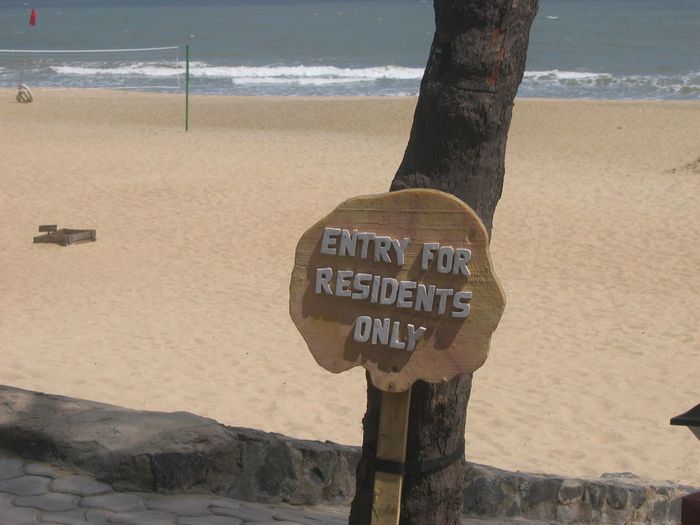Tourism has often remained ‘under the radar’ in the global debate on land and resource grabbing, despite the fact that plenty of reports by scientists, journalists and civil society organisations bear testimony that evictions and displacement processes in the name of tourism threaten local communities’ right to land, housing and resources. A recent study of 25 cases by Andreas Neef finds that tourism is a major contributor to land grabs, evictions, gradual displacement processes all over the world. The Professor in Development Studies at the University of Auckland, New Zealand has conducted a substantiated analysis that examines the global scope of tourism-related grabbing of land and other natural resources. In an interview with Tourism Watch, he sheds lights on the key finding of his study.
Tourism Watch (TW): Why has tourism remained relatively absent from the debate on land rights and land grabbing?
Andreas Neef (AN): I think there are various reasons. First, tourism is a fragmented sector with numerous stakeholders along the ‘value chain’, so it is not easy to single out individual businesses that do not respect land and resource rights of local communities. Second, it is a ‘feel good’ industry that stands for leisure and pleasure and is not commonly associated with violent land grabs and forced evictions. Finally, I believe it is also an issue of focus: many Non-Governmental Organisations have highlighted infringement on local land rights by other extractive industries, such as mining and agro-industrial operations, where the scope of land grabs and evictions seems greater. It may be true that hotels and resorts need less land to run their business than a mining company, a rubber concession or a biofuel plantation, but if we include the millions of hectares that have been taken from local communities for the establishment of ‘people-free’ wildlife sanctuaries, national parks and cultural heritage sites – which then have become major tourist attractions –, we quickly realise the dramatic impact of tourism on customary and indigenous land and resource rights.
TW: What are the main drivers for tourism-induced land grabs and displacement processes you identified in your study?
AN: Obviously, tourism operators – and multinational hotel chains in particular – are primarily driven by economic interests. And they know exactly what the majority of their clients want: pristine beaches, all-inclusive resorts and personal safety. Such a secure and comfortable holiday environment can most easily be created if the original occupants are relocated to other areas. The agendas of host governments tend to be more complex. Governments may be interested in national growth and job creation through tourism, but they also find tourism zones more manageable and taxable than areas that are inhabited by diverse local communities. In border areas or conflict zones, tourism development may be instrumentalised by governments to militarise and secure the region. For me, the extent to which the military or paramilitary forces are often involved in the tourism sector and associated land grabs and evictions has been one of the most interesting findings of the study. Another driver is that tourists do not just come as temporary visitors, but want to stay as residential tourists, which often makes land unaffordable for local residents. In such cases, displacement can be more gradual but not necessarily less impactful.
TW: Which discourses are used to justify land grabs and displacement in the name of tourism?
AN: Governments and tourism businesses tend to use quite similar discourses to justify tourism-related land grabs and evictions. Very common is the ‘public interest’ discourse where tourism is presented as a means for national economic growth, poverty alleviation or heritage conservation. Governments can then invoke the concept of ‘eminent domain’ as a legal mechanism, which overrules other forms of legal or legitimate ownership to the land. The ‘idle land’ discourse is another favourite among governments and tourism investors. It is based on the claim that a particular area that has been sought out for tourism development is vacant, underutilised or degraded. This can then be extended by saying: ‘the area is degraded because the original inhabitants have destroyed the environment, and we need tourism for rehabilitation purposes’. And tourism is supposed to provide the jobs for the dispossessed communities. Oftentimes, it is also claimed that mass tourism can help to restore areas that have been devastated by disasters or armed conflicts.
TW: How can the actors responsible be held to account?
AN: Well, that is the tricky part because the perpetrators are not acting in isolation but are often part of a larger alliance, which includes other actors – such as the financial sector or international donors – that may not even be aware of the extent of land grabbing and forced evictions on the ground. We have to keep in mind that tourism-related land grabs and displacements happen across the political spectrum – in democratic systems, semi-authoritarian regimes and countries under authoritarian rule. The existing tenure legislation also often does not make a difference; land grabs can occur in countries with a predominantly private ownership system and under customary, communal forms of land and resource tenure. I think an important first step would be to reject all claims that people can be displaced and land can be acquired for ‘public purpose’ by tourism. It is also crucial to incorporate the UN Guiding Principles on Business and Human Rights into government policies and mandatory national and international law and emphasise that the tourism sector should receive the same attention as other extractive industries and the manufacturing sector. If you look at the EU governments’ national action plans on business and human rights, you will note that the tourism sector is hardly mentioned.


